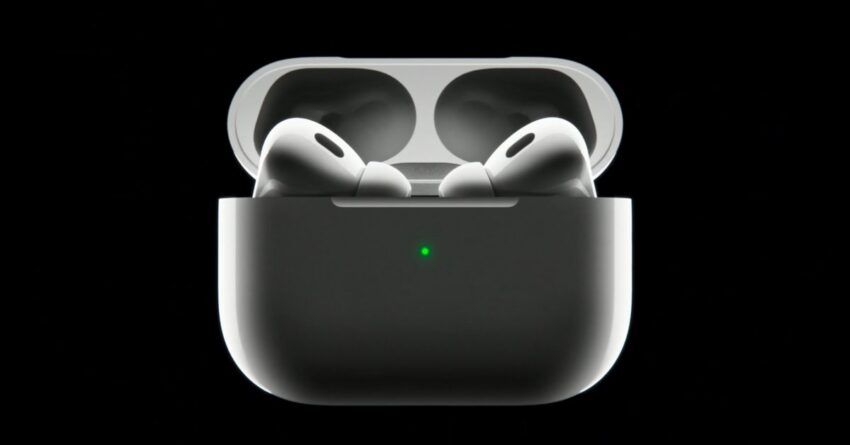
ios 26 s new airpods setting can Apple’s latest iOS 26 update introduces a new setting for AirPods that addresses a common Bluetooth connectivity issue, allowing users to maintain control over their audio output.
ios 26 s new airpods setting can
Introduction to iOS 26 Features
With the release of iOS 26, Apple has once again demonstrated its commitment to enhancing user experience through innovative features and improvements. While many of the new functionalities have garnered significant attention, one particular update may not be as widely recognized but could have a substantial impact on how users interact with their AirPods and other Bluetooth devices.
The New AirPods Setting
One of the standout features of iOS 26 is a new setting that allows users to prevent their AirPods from automatically connecting to other Bluetooth speakers. This is particularly useful in scenarios where users frequently switch between devices, such as moving from their iPhone to their car’s audio system. The new setting aims to provide a more seamless and controlled audio experience.
Understanding the Bluetooth Hijacking Issue
Bluetooth hijacking refers to the unintended automatic connection of audio devices to Bluetooth speakers or systems, often leading to frustration for users. For instance, when a user is listening to music on their AirPods and enters their car, the audio may automatically switch to the car’s speakers, interrupting their listening experience. This can be particularly annoying during phone calls or when users are engaged in activities that require their full attention.
How the New Setting Works
The new setting in iOS 26 allows users to manage their Bluetooth connections more effectively. By navigating to the Bluetooth settings on their iOS device, users can now find an option specifically designed for AirPods. This setting enables users to choose whether they want their AirPods to automatically connect to other devices or remain exclusively linked to their iPhone or iPad.
Steps to Configure the New Setting
To take advantage of this new feature, users can follow these simple steps:
- Open the Settings app on your iPhone or iPad.
- Navigate to the Bluetooth section.
- Locate your AirPods in the list of devices.
- Tap on the information icon (i) next to your AirPods.
- Find the new setting that controls automatic connections and toggle it according to your preference.
By following these steps, users can customize their audio experience, ensuring that their AirPods remain connected only when desired.
Implications for Users
The introduction of this setting has several implications for users, particularly those who rely heavily on AirPods for daily activities. The ability to control automatic connections can lead to a more personalized audio experience, reducing interruptions and enhancing overall satisfaction with the device.
Enhanced User Control
One of the most significant benefits of this new feature is the enhanced control it offers users. Many individuals use their AirPods in various environments, including at home, in the office, and in their vehicles. The ability to dictate when and how their AirPods connect to other devices allows for a more tailored experience. Users can now enjoy their audio without the fear of unexpected interruptions.
Impact on Daily Activities
For those who frequently switch between devices, this feature can significantly improve daily activities. For example, a user who listens to music while working may not want their audio to switch to their car’s speakers when they step outside. Similarly, during phone calls, maintaining a stable connection to AirPods can be crucial for clear communication.
Stakeholder Reactions
The introduction of this feature has been met with positive feedback from users and tech enthusiasts alike. Many have expressed their appreciation for Apple’s attention to user experience, particularly regarding Bluetooth connectivity issues that have long been a source of frustration.
User Testimonials
Early adopters of iOS 26 have taken to social media and forums to share their experiences with the new setting. Users have reported a noticeable improvement in their audio experience, with fewer interruptions and a more reliable connection to their AirPods. Testimonials highlight how the feature has made listening to music, taking calls, and engaging in video conferences more enjoyable.
Industry Expert Opinions
Tech industry experts have also weighed in on the significance of this update. Many view it as a step forward in addressing common Bluetooth issues that have plagued users for years. Experts emphasize that this feature not only enhances user satisfaction but also reinforces Apple’s reputation for prioritizing user-centric design.
Contextualizing the Update Within Apple’s Ecosystem
This new setting for AirPods is part of a broader trend within Apple’s ecosystem to improve connectivity and user experience across devices. As more users adopt wireless audio solutions, the need for reliable and user-friendly features becomes increasingly important.
The Rise of Wireless Audio
The shift towards wireless audio has been significant in recent years, with AirPods leading the charge in the market. As more consumers embrace wireless technology, the demand for features that enhance usability and connectivity has grown. Apple’s decision to introduce this setting aligns with the expectations of a modern user base that values control and customization.
Future Implications for Bluetooth Technology
The introduction of this feature may also have broader implications for Bluetooth technology as a whole. As users become more aware of their connectivity options, there may be increased pressure on manufacturers to develop more intuitive and user-friendly solutions. This could lead to further innovations in Bluetooth technology, enhancing the overall user experience across various devices and platforms.
Conclusion
The new AirPods setting introduced in iOS 26 represents a significant advancement in user control over Bluetooth connectivity. By allowing users to manage automatic connections, Apple has addressed a common pain point for many AirPods users. As the demand for wireless audio solutions continues to grow, features like this will play a crucial role in shaping the future of audio technology.
As users explore the capabilities of iOS 26, it is clear that Apple is committed to enhancing the overall experience of its devices. This new setting not only improves the functionality of AirPods but also reinforces Apple’s dedication to user-centric design and innovation.
Source: Original report
Was this helpful?
Last Modified: November 6, 2025 at 10:36 am
2 views















